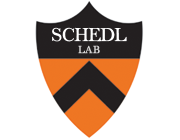Functional Dissection of the Blocking and Bypass Activities of the Fab-8 Boundary in the Drosophila Bithorax Complex.
Publication Year
2016
Type
Journal Article
Abstract
Functionally autonomous regulatory domains direct the parasegment-specific expression of the Drosophila Bithorax complex (BX-C) homeotic genes. Autonomy is conferred by boundary/insulator elements that separate each regulatory domain from its neighbors. For six of the nine parasegment (PS) regulatory domains in the complex, at least one boundary is located between the domain and its target homeotic gene. Consequently, BX-C boundaries must not only block adventitious interactions between neighboring regulatory domains, but also be permissive (bypass) for regulatory interactions between the domains and their gene targets. To elucidate how the BX-C boundaries combine these two contradictory activities, we have used a boundary replacement strategy. We show that a 337 bp fragment spanning the Fab-8 boundary nuclease hypersensitive site and lacking all but 83 bp of the 625 bp Fab-8 PTS (promoter targeting sequence) fully rescues a Fab-7 deletion. It blocks crosstalk between the iab-6 and iab-7 regulatory domains, and has bypass activity that enables the two downstream domains, iab-5 and iab-6, to regulate Abdominal-B (Abd-B) transcription in spite of two intervening boundary elements. Fab-8 has two dCTCF sites and we show that they are necessary both for blocking and bypass activity. However, CTCF sites on their own are not sufficient for bypass. While multimerized dCTCF (or Su(Hw)) sites have blocking activity, they fail to support bypass. Moreover, this bypass defect is not rescued by the full length PTS. Finally, we show that orientation is critical for the proper functioning the Fab-8 replacement. Though the inverted Fab-8 boundary still blocks crosstalk, it disrupts the topology of the Abd-B regulatory domains and does not support bypass. Importantly, altering the orientation of the Fab-8 dCTCF sites is not sufficient to disrupt bypass, indicating that orientation dependence is conferred by other factors.
Keywords
Journal
PLoS Genet
Volume
12
Issue
7
Pages
e1006188
Date Published
07/2016
ISSN Number
1553-7404
Alternate Journal
PLoS Genet.
PMID
27428541

